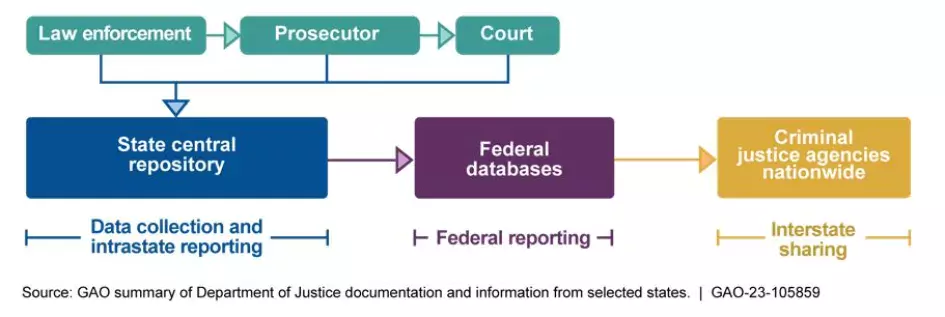Reducing Deaths Caused by Impaired Driving in the U.S.
More than 10,000 Americans are killed each year in crashes caused by drivers under the influence of alcohol, prescription or over-the-counter medicine, or illegal drugs. Many of these drivers have a prior history of driving under the influence.
Tracking repeat offenders is key to making our roads safer, but doing so can be challenging. Today’s WatchBlog post looks at our new report, also released today, on some of the challenges law enforcement agencies face when identifying repeat offenders.
Image

Tracking repeat offenders
Identifying repeat offenders is key to determining the appropriate penalty and keeping impaired drivers off roads. Most states have escalating penalties for repeat offenses, such as suspension of driving privileges or required use of a device that checks for blood-alcohol content before a car will start. Many states also have educational and treatment programs for repeat offenders. But determining whether an individual has a history of impaired driving isn’t always easy for law enforcement agencies and courts, especially when the driver has prior convictions in another state.
Federal databases maintained by FBI can help law enforcement, courts, and other state and local agencies identify repeat impaired drivers, regardless of where prior offenses occurred. All 50 states and D.C. voluntarily report criminal history information—such as fingerprints and dispositions (i.e., the results of criminal proceedings)—to these databases.
Process Used by States for Collecting, Reporting, and Sharing Impaired-driving Data Used to Identify Repeat Offenders
Image

States face roadblocks in collecting complete information on impaired drivers
The more complete the information in FBI’s databases, the more easily law enforcement agencies and courts can identify and track repeat impaired drivers. However, the information states collect and then report to FBI has gaps, including missing fingerprints and dispositions.
States face a number of challenges in collecting complete information on impaired drivers. These challenges include:
- “Cite and Release:” Rather than arresting an offender, a law enforcement officer may issue a ticket with a summons to appear in court, and then let the offender go—often without taking fingerprints. Most criminal history records are based on fingerprints. So without fingerprints, incidents may not be recorded in state central repositories or reported to federal databases.
- Lack of Resources: Lack of staff, training, equipment, and technology can also make it difficult to collect complete information on impaired drivers. For example, some state and local criminal justice agencies do not have mobile scanners to capture fingerprints in the field, or machines to scan fingerprints in courtrooms.
Steering a Course to Safer Roads
Many states have taken advantage of grant programs administered by the Departments of Justice and Transportation to help them collect and report more complete information on impaired drivers. For example, states have used grant funds to:
- Improve reporting of dispositions, by enabling courts to submit this information electronically rather than through paper forms.
- Purchase machines to enable law enforcement agencies to capture fingerprints electronically rather than on paper cards.
- Train law enforcement and prosecutors to identify, charge, and sentence repeat offenders.
These grants, along with federal training and technical assistance, are helping states more effectively identify repeat offenders and take proactive measures to keep these dangerous drivers off the roads.
- Comments on GAO’s WatchBlog? Contact blog@gao.gov.
GAO Contacts
Related Products

GAO's mission is to provide Congress with fact-based, nonpartisan information that can help improve federal government performance and ensure accountability for the benefit of the American people. GAO launched its WatchBlog in January, 2014, as part of its continuing effort to reach its audiences—Congress and the American people—where they are currently looking for information.
The blog format allows GAO to provide a little more context about its work than it can offer on its other social media platforms. Posts will tie GAO work to current events and the news; show how GAO’s work is affecting agencies or legislation; highlight reports, testimonies, and issue areas where GAO does work; and provide information about GAO itself, among other things.
Please send any feedback on GAO's WatchBlog to blog@gao.gov.



